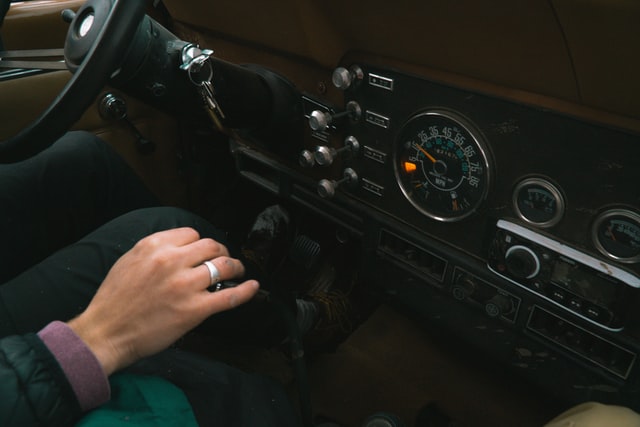How to Bleed a Clutch on a Jeep Wrangler YJ

The clutch’s hydraulic system sometimes can become clogged with air. Signs that may come as a result of this include:
• Clutch doesn’t fully disengage
• Change in pedal travel
• Clutch pedal travel that is soft or mushy.
This can lead to two costly problems. When you’re stopped, the clutch frictional material rubs against the flywheel somewhat. Why some power travels into the transmission during shifts because the clutch does not entirely disengage. The synchros and transmission gears wear out as a result of this.
The expense of fixing either problem could be in the thousands of dollars. As soon as you notice air stuck in the hydraulic system, you must bleed your clutch. If your line contains air in it, you can try disconnecting this from the master cylinder and bleeding it to get any air trapped out. If that doesn’t work, your slaving cylinder’s installation could be the issue.
- Attach a tube to the bleeder valve’s nipple to keep everything clean. When using a clear tube, it’s easy to determine when the system is completely empty.
- Close the bleeder valve when the fluid flow slows down while your friend maintains clutch pressure. Restart the operation by releasing the clutch pedal. Because air is easier to compress than clutch plate release springs, your friend should feel the pedal “stiffen up” when you finish this procedure. Make sure the bleeder valve is securely closed and take a test drive after you’ve finished this step.
1. Bleeding of the Clutch Manually
The clutch pedal is pumped by one person, while the clutch bleed valve is opened and closed by a second.
2. The Compression Method
The hydraulic system is pressurised by a pressure bleeder attached to the clutch master cylinder. Hydraulic fluid is forced into the clutch master cylinder by this device. As the clutch bleed valve at the slave cylinder is opened and closed, this procedure is carried out. It then takes both fluid and air into a separate vessel and traps them. Bleeding a clutch is, fortunately, a straightforward procedure.
You’ll Need These Tools
1. A pressure bleeder is a device that allows the pressure in the system to be released
2. A flexible pipe or tubing that fits snugly around the bleeder valve (clear tube is best)
3. Collect the liquid in a cup or can.
4. Stands for jack and jack
5. A bleed-valve wrench (They don’t have to be big.)
A $50+ pressure bleeder (or vacuum bleeder) can be an excellent investment if you work on your vehicle frequently. It’s also good for bleeding the brakes.
What You Should Do
Follow these instructions to bleed your clutch:
1. Raise the vehicle’s front end.
2. Pull the hood back and open it.
3. Open the clutch fluid reservoir and remove the top. Check to see if the reservoir is totally full.
4. Place the pressure bleeder on top of the reservoir and screw it in place.
5. Several times, pump the clutch.
6. Go underneath the truck and get the following items:
- Tubing that is flexible
- Cup
- Wrench
7. Locate the bleed valve as well as the clutch slave cylinder. Spray some penetrating oil on it if it is rusted.
8. Check if the bleed valve may be turned.
9. Connect the hose to the bleed valve and prepare the cup for fluid collection.
10. Turn the bleeder valve 1/4 turn open with the wrench while holding the hose. Begin looking for bubbles of liquids and air.
11. Hold your breath until the air bubbles have subsided.
12. Although you should have only lost a small amount of fluid, you should nonetheless fill the reservoir to the full mark.
13. Run a clutch check. It should feel more secure and engaging. You might require a new clutch master or slave cylinder if the spongy pedal returns fast.
Why is there no resistance in my clutch pedal?
A defective clutch master cylinder is the most likely cause when there is no or little pressure to the clutch pedal. This is the unit that provides the pressure that causes the hydraulic fluid to flow into the clutch slave cylinder, causing the clutch to disengage.
When it comes to clutch pedals, how should they feel?
When you press the clutch pedal, it should feel firm, similar to how the brake pedal feels. As you push it toward the floor, it should fight and come to a halt just before the real floorboard. You should be able to shift gears while depressing the accelerator pedal. If your clutch release mechanism is hydraulic, look for the following: Hydraulic system with air in it
Is it necessary to fully depress the clutch?
To disconnect the power from the transmission, depress the clutch only as much as is necessary. If you press the clutch down far enough, you must be able to shift comfortably between gears. Your brake and clutch pedals must be at the perfect height for you all to drive safely. Most brake and clutch pedals should have around a centimetre (less than half an inch) of free play.
Is it still required to Double Clutch?
While double clutching is not required in a car with a synchronised manual transmission, it can be useful for smoothly upshifting to accelerate and, when done correctly, it can prevent wear on the synchronizers, which generally equalise transmission input and output speeds to allow. Your lever should easily drift down 3 of an inch with one inch; also need substantial exertion to traverse the remaining distance to the ground. When you release the pedal, the clutch disc is constantly involved, thanks to this pedal free-play.
